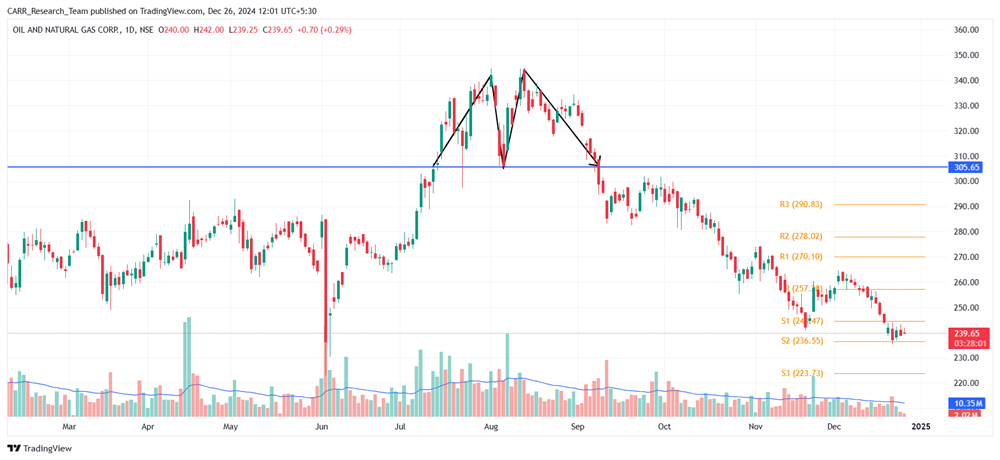Stock name: Linde India Ltd.
Pattern: Double top pattern and retest
Time frame: Daily
Observation:
Since the post-COVID rally, the stock has been in an uptrend but formed a double-top pattern on its daily chart between April and November 2024. A breakdown occurred on November 12, 2024, followed by a brief downward move and an immediate retest. The stock resumed its decline on November 28, 2024, post-retest, and saw a significant red candle with heavy volume on December 30, 2024. Technical analysis suggests that if the current momentum persists, further downside may be expected. It's advisable to look for additional confirmations, such as RSI levels and the MACD indicator.

You may add this to your watch list to understand further price action.
Disclaimer: This analysis is purely for educational purpose and does not contain any recommendation. Please consult your financial advisor before taking any financial decision.
Stock name: India Cements Ltd.
Pattern: Flag and pole pattern
Time frame: Daily
Observation:
The stock experienced a steep upward move from June to July 2024, followed by a sideways consolidation until December 2024. This has led to formation of flag and pole pattern on its daily chart. In early December, it saw a slight decline but rebounded strongly on December 23, 2024. On December 24, it breached the consolidation pattern and resumed its upward trajectory. A significant green candle with strong volumes on December 30, 2024, indicates positive momentum, and technical analysis suggests that the stock may see further upside movement if the stock sustains this momentum. It's advisable to look for additional confirmations, such as RSI levels and the MACD indicator.

You may add this to your watch list to understand further price action.
Disclaimer: This analysis is purely for educational purpose and does not contain any recommendation. Please consult your financial advisor before taking any financial decision.


























